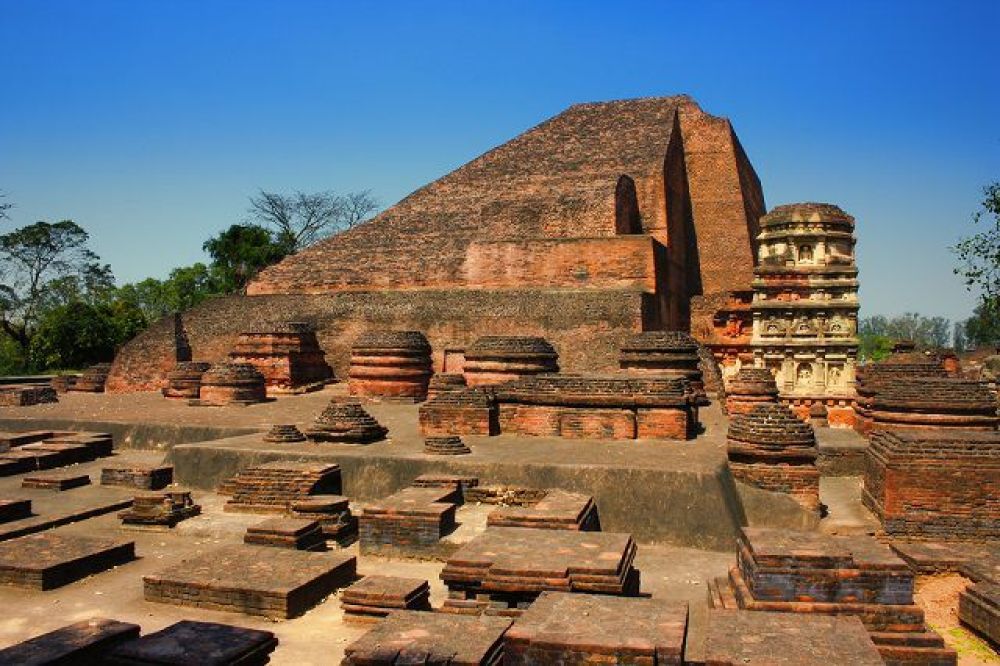

Nalanda University stands as a testament to the rich educational and spiritual history of ancient India. Founded in the 5th century AD, Nalanda was one of the earliest universities in the world. This esteemed hub of learning attracted scholars and students from as far as Tibet, China, Greece, and Persia, making it a truly international institution. The university thrived for centuries before falling into decline and eventually being destroyed in the 12th century by an army under Bakhtiyar Khilji.
The ruins of Nalanda University were rediscovered in the 19th century by the Archaeological Survey of India (ASI), which sparked interest among history enthusiasts and scholars worldwide. Initial excavations commenced under the direction of Sir Alexander Cunningham and Rajendralal Mitra in the late 1800s. Since then, Nalanda has gradually transformed into an important tourist destination for those who wish to connect with the intellectual legacy of ancient India.
Tourism at Nalanda took a more structured form after India attained independence in 1947. The site was further excavated, conserved, and developed for educational tours and research. The establishment of the Nalanda Museum and the development of the surrounding area have made the site more accessible and informative for visitors. In 2016, the Nalanda University ruins were declared a UNESCO World Heritage site, which further boosted tourism and international recognition.
The latest trends in tourism at the Nalanda University Ruins focus on sustainable and educational travel. There is a growing interest in heritage walks, guided tours, and immersive experiences that allow tourists to appreciate the historical significance and architectural brilliance of the ruins.
Educational tourism is also on the rise, with universities and schools organizing trips to Nalanda as a means of exposing students to India's ancient academic excellence. The promotion of bicycle tours in and around the ruins is another trend, providing a greener way to explore the vast complex.
Digital initiatives like augmented reality tours are also being considered to enhance the visitor experience. These innovations can bring the ancient university back to life, helping tourists visualize the grandeur of Nalanda during its prime.
Recent archaeological discoveries and ongoing excavations continue to add layers to the narrative of Nalanda, promising fresh insights and attractions for tourists. With each find, the story of this ancient seat of learning becomes more intricate, further piquing the curiosity of history buffs around the globe.
Lastly, the Indian government and various travel organizations are leveraging the international allure of Nalanda by integrating it into broader travel itineraries that include other historical destinations in Bihar, such as Bodh Gaya and Rajgir. This strategic approach in promoting Bihar's cultural heritage is set to solidify the state's position as a prime destination for those seeking historical and spiritual enlightenment.
Travellers to Nalanda University Ruins can expect to witness a serene atmosphere amid the remnants of ancient stupas, temples, viharas (monasteries), and intricate brickwork. The site also includes the Nalanda Archaeological Museum, which houses a collection of Buddhist statues, coins, inscriptions, and other artifacts excavated from the site.
Apart from the ruins, the nearby Nalanda Multimedia Museum offers a high-tech overview of Nalanda's history and significance using audio-visual aids—a must-visit for a comprehensive understanding of the university's impact on global education and philosophy.
To ensure an enriching experience, it is advisable to either hire a knowledgeable guide or join an organized tour that can provide profound insights into the historical context and cultural relevance of the ruins.